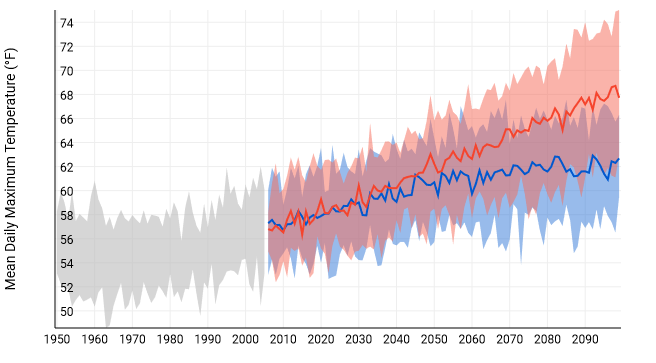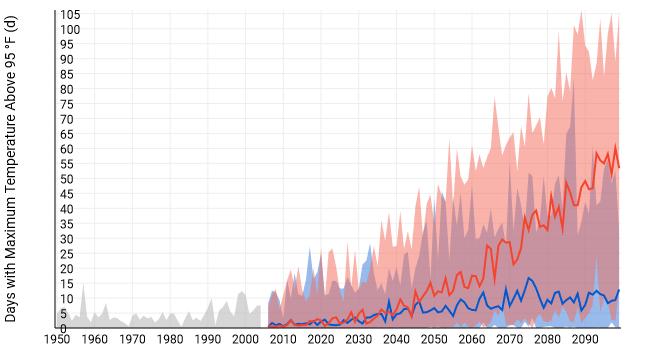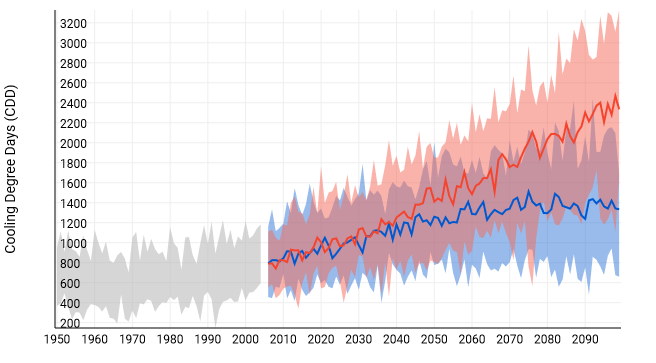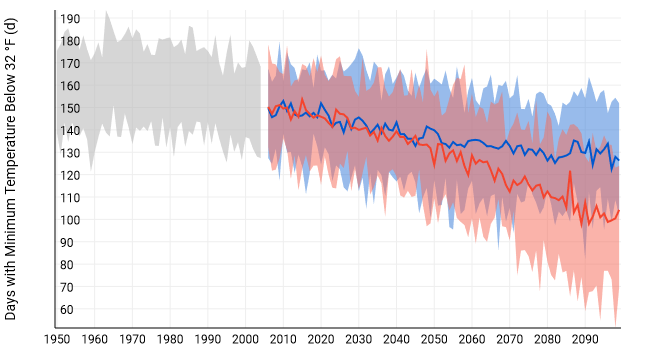Climate Vulnerability and Adaptation in Winthrop Minnesota
Climate change is a global phenomenon that creates local impacts. The climate in Winthrop has already changed. From 1950 through 2015, the City of Winthrop has experienced an increase of 1.1° in annual average temperature, an increase of 1-2 days above 95 degrees, a decrease of 10 days below 32 degrees, and an increase of extreme weather events of 52%. Over this 60 year period, the pace of change has increased from 1980 to 2010.
By 2100, the City of Winthrop can expect an increase of 3-12° in annual average temperature, an increase to 55 days above 95 degrees, 50 fewer days below freezing, and an increase in air conditioning demand by 187%. By the middle of this century (2040-2070) Summertime conditions for Winthrop are projected to be similar to the conditions currently felt over 400 miles or further to the South...the equivalent of moving the City 232 feet south every day.
City On The Move - Summer 2040 in Winthrop Will Feel Like:
Projected changes in annual average temperatures and growing seasons will result in a change in the overall climate of the Minnesota Southeast region. Summertime conditions for mid-twenty first century in the Minnesota Southeast are projected to be similar to the conditions currently felt 400 miles or further to the South.
According to the University of Michigan Climate Center, by 2040 summertime conditions in region are anticipated to be similar to those today in Columbia MO, Evensville IN, Bowling Green KY, and Maryville TN.
Understanding Vulnerability in Winthrop
The types of exposures people have to climate change vary from region to region, as well as within sections of any given City. The inherent sensitivity we each have to climate change impacts, as well as our capacity to respond to and cope with those impacts and related health threats also vary. Different ages and life stages have inherently different sensitivities to the impacts of climate change - for example, the very young and the very old are particularly sensitive to climate-related health impacts. In addition socioeconomic factors and health disparities, known as social determinants of health, may amplify of mitigate the climate-related health effects. Within Winthrop, the populations of particular vulnerability include children under 5, older adults, individuals with disabilities, individuals in economic stress, people of color, limited English speakers, and individuals employed in climate vulnerable jobs.
Climate Change impacts will affect everyone. Prioritizing the City of Winthrop's efforts to address the most vulnerable populations within the City, however, will help ensure the greatest impact with limited resources. Based on the Assessment's review the City’s adaptive efforts may be most effective by prioritizing strategies which address the climate risks of Extreme Temp/Weather, Air Quality Impacts, Vector Borne Diseases, and Flood. Particular attention should be paid to strategies which are most effective for those in Economic Stress, Older Adults, At Risk Workers, and individuals with Disabilities.
Climate Adaptation Framework
While the science behind climate change is complex, many of the solutions to reducing impacts are already a part of Minnesota municipal government expertise. In many instances, responding to climate change does not require large scale changes to municipal operations, but simply requires adapting exiting plans and polices to incorporate knowledge about changing levels of risk across key areas such as public health, infrastructure planning and emergency management.
Climate Risks to the Population
Winthrop Minnesota Population Vulnerability Assessment and Climate Adaptation Framework
Download a copy of the report here.
About The Report
The Winthrop Vulnerable Population Assessment and Climate Adaptation Framework report includes a review of past and projected climate change impacts, identification of community vulnerabilities, and development of adaptation strategies. The assessment identifies climate risks and impacts on the population of Winthrop MN as well as climate change impact multipliers such as urban heat island effects.
This work has been made possible by a 2017 Environmental Assistance Grant provided by the Minnesota Pollution Control Agency. Learn More








